When in danger or in doubt, run in circles, scream and shout.
― Herman Wouk
If you were driving east into Marathon last week on the Seven Mile Bridge and looked out on the ocean side, you would have seen a sailboat with no sails up, spinning in place. That was us, going around in circles on a flat, calm sea. I could have called this article “Donuts in the Deep,” “Circling the Drain,” or simply “Calibrating the Compass,” but I was trying to imagine what people would think as they drove by and spotted a sailboat slowly rotating.
Our auto-pilot had stopped working on our way to Marathon last August, and although Phil had replaced the rudder reference (what’s that? see photos), the direction of travel was still about 50 degrees off, so we knew the compass had to be calibrated. For months, it was on the “to-fix” list, but since the engine was blowing white smoke and losing power, it wasn’t our first priority. It took many months (on island time) but finally, the old Westerbeke was patched up, fitted with all new valves and a new head gasket, and ran like a top. It was time for a shake-down cruise.
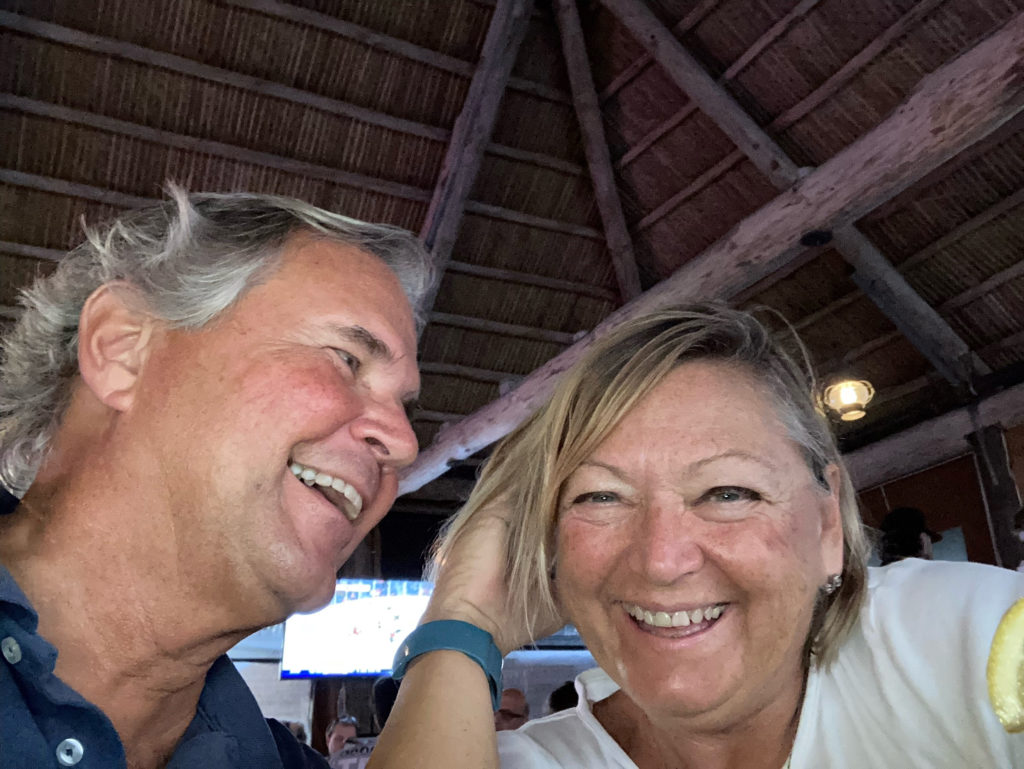
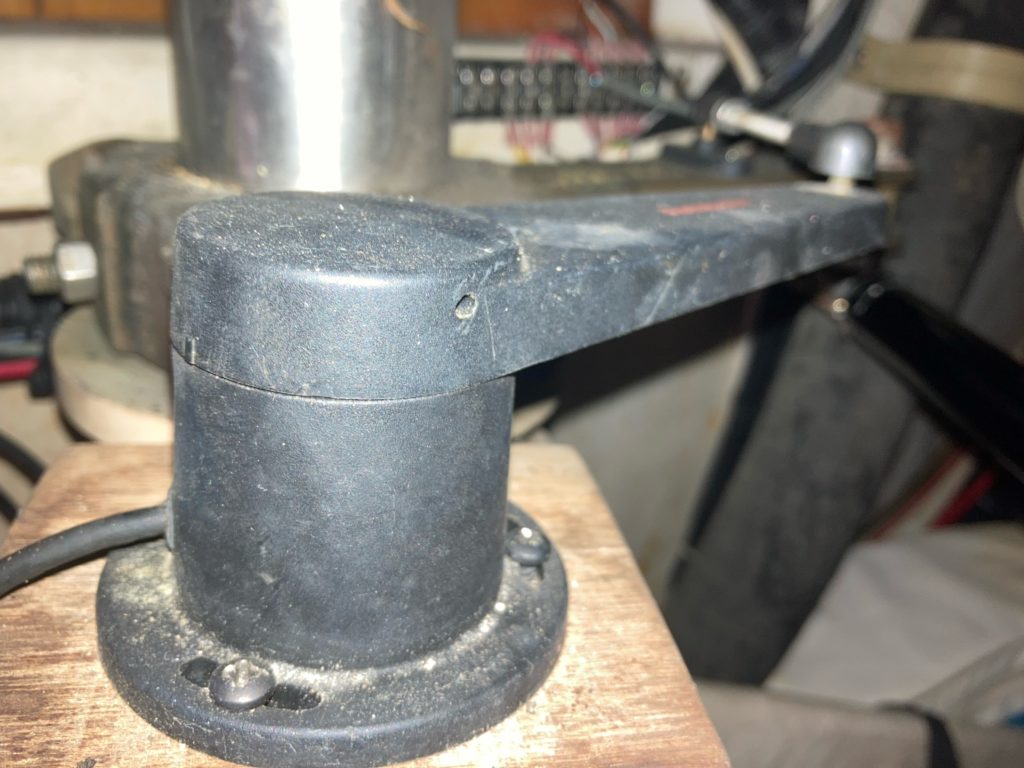
We picked a calm day that promised light winds. After going through the cabins and salon and putting away everything that could go flying, we were ready to leave the dock. You wouldn’t believe the loose items we had accumulated in seven months. We had grocery bags full of loose breakables secured in the v-berth. I tied up the drawers in my mom’s jewelry box – that was a disaster the last time we sailed in rougher waters; the drawers came out and scattered earrings and necklaces all over the captain’s cabin. I locked cupboard doors, secured the cat food and water dish, and took everything off the galley counters. As it turned out, we probably didn’t have to do all that. I probably didn’t need my seasickness relief band, either.
No neighbors were around that Wednesday morning, so Phil and I unhooked our electric cord and took down the dock lines. Without a breath of wind, Phil backed out of the slip easily and we were on our way. I lifted the fenders and Phil hooked up the lifelines. It was partly cloudy, not a beautiful day, but not hot. The purring of the engine was music to our ears.
We have an 18 ½ year old cat who doesn’t like to travel much. No purring was heard from the cat quarters. Maggie hunkered down underneath the salon table, threw up, and went into the head to lie on the floor. She got extra treats when we got home.

We exited through the channel and headed west toward deeper water. The ocean was flat calm and the engine sounded healthy and happy for the first time in a year. Phil followed the instructions for calibrating the flexgate compass, pressing a series of keys on the autopilot controller. Then, when the screen said, “Turn boat,” he slowly rotated Catmandu while I thought about how comical it must look from the bridge.
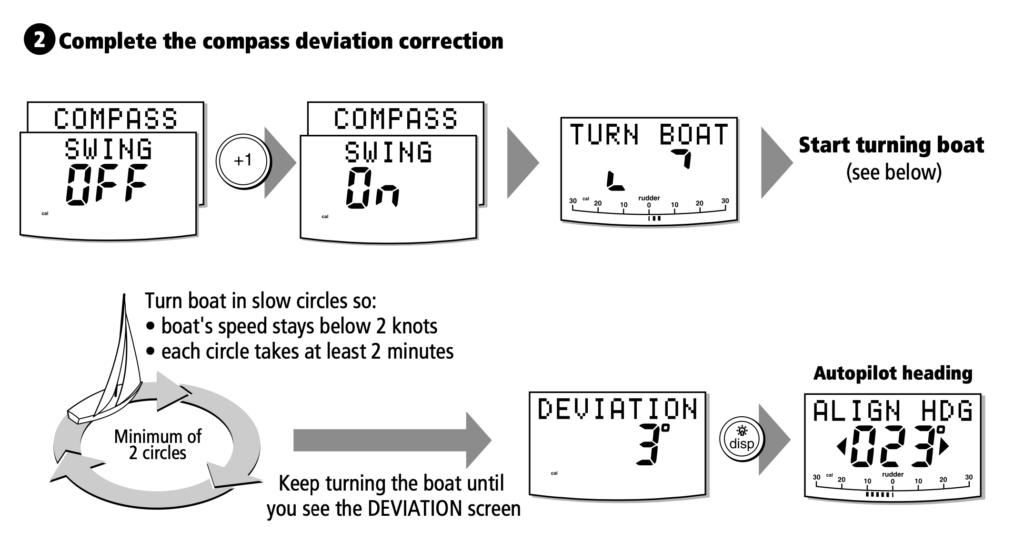
We made two or three revolutions before the message told us how many degrees of compass deviation we had so we could adjust it to our actual course heading. Done! Our autopilot is fixed. For those who don’t sail, this device allows us to set a course, set the sails or run the engine, and relax while “Otto” steers. (Yes, it reminds me of the inflatable pilot in the Airplane movies.)
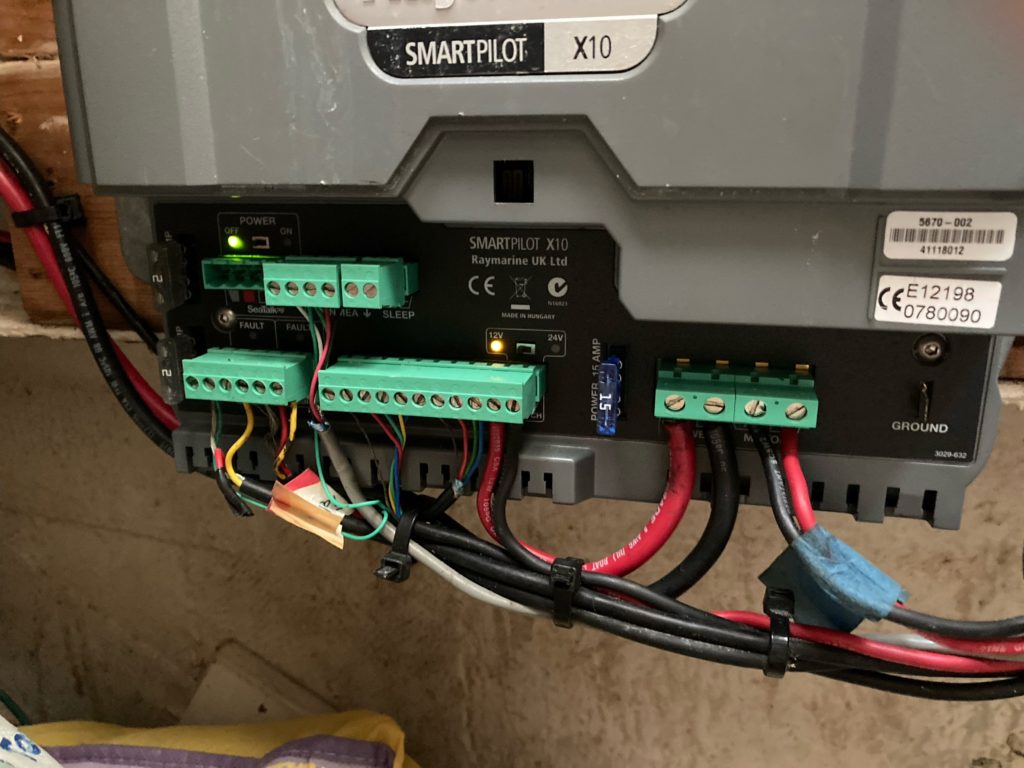
We were not ready to head back to port, so we pointed into the wind, raised the head sail and turned off the engine. It wasn’t worth raising the mainsail; there was almost no wind. We bobbed around in the water, loving the peace that descends when the engine turns off. The breeze was no more than a light caress on the jib, and we managed to move about a half mile at .5 knots. But we were off the dock. We were sailing.
Dolphins appeared off the port stern, and we heard one just behind us slapping his tail. There were several more off the port bow, swimming so close we could see them under the water. They slap their tails to stun fish and to tell their pod members where the fish are. They swam around us for a while, and after they disappeared, we spotted a large sea turtle with a patch of seaweed on his shell. The turtle wasn’t close enough to identify the species. He dove back under the water, and we turned for home.
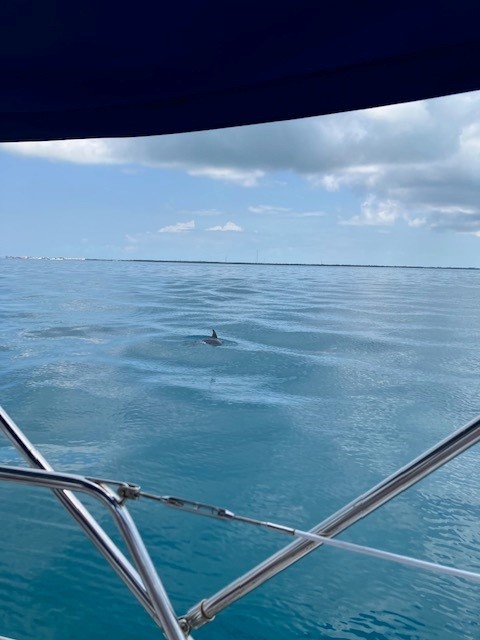
Where are we from, and where are we going?
Our slow cruise began nearly ten years ago in Annapolis. Now it can continue. We have a working engine, an autopilot, a new water maker, and updated charts. We have the means to visit Key West, the Dry Tortugas, the west coast of Florida, the Bahamas and beyond. But hurricane season approaches, and we will have to be somewhere safe until November. We have been here in Marathon for almost a year, loving the climate-controlled pool, the easy access to laundry and supplies, and the incomparable sunsets. We travel by dinghy to restaurants and tiki bars – and back. Maybe we are a bit spoiled, for cruisers.

Living the island life just south of mainland Florida, we find ourselves in the company of other boat-dwellers, sailors, and wanderers. Phil makes friends easily, and we socialize at the pool and the marina parties, only to discover weeks later that our new friends have moved on. Most people are just passing through, but we have been here so long, we got a 10% discount on dinner the other night for being “locals.”
It is a welcoming community, and when they ask us where we are from, we look at each other for an answer.
“All over,” I say. Born in California, raised in a nomadic military family in communities on both U.S. coasts, eventually landing for a time in Colorado, Washington State, and New Hampshire, I never know what to say.
“Where’s home, though?” they might ask.
“Wherever the boat is,” says Phil.
We don’t know exactly where we are going next, and we don’t know when. But we do know we can find our way there with a working autopilot, a working engine, and a correctly calibrated compass. Until we have a float plan, a destination or at least a route on the chart plotter, I guess we will be running in circles. At least we are finally running.